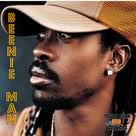
By Sadeke Brooks—
Image matters and getting the public to see an artiste’s image in a music video is even more important.
Singer J Capri was racking up millions of views on YouTube before being seen on local interviews with various media houses. Whine and Kotch with Charly Black and Pull Up To Mi Bumper with Konshens have received over nine million views each.
Based on her increasing popularity, 22-year-old J Capri knows very well how important music videos are.
“I think they are really important. It is promoting yourself worldwide. You, as an artist, need to be just as important as the song,” she told The Sunday Gleaner.
As it relates to two of her more popular music videos, she says “it helped to promote the songs and put me out there so when I go out or go on tour people recognise me”.
But, for many new artists, she says she understands that there are monetary constraints. Luckily, she received corporate sponsorship from companies like Boom and Wray & Nephew to do her videos.

Film director Rick Elgood also knows these constraints exist, but insists that artists need to put out some sort of music video, even something very simple.
“It (music video) is absolutely critical for them (artists). It is the real way to show yourself,” he said.
He explained that the Internet is now the place for artists to show themselves “much more so than it was years ago.”

“Even if it is the simplest music video or something you shoot on your phone, it could go semi-viral,” Elgood continued.
He noted that artists are not making much money from the sale of songs and albums. Therefore, “the way to get shows is to let people see you perform,” he said.
Elgood has directed memorable videos such as Beenie Man’s Dancehall Queen, Shoot Out with Mykal Rose and Jr Gong, Jolly Boys’Rehab, and RDX’s Dancers Anthem.

But he says he has heard of videos that cost as little as US$500. Generally, he said a good-quality music video would cost between US$2,500 and US$10,000.
In cases where a Jamaican artist teams up with an overseas artist, he said it usually runs between US$10,000 and US$20,000. And when Jamaica is used as a location for the videos of international acts, he says it runs in the region of US$250,000.
ALL ABOUT PROMOTION
“It’s all about promotion. It’s great promotion and a great way to show your performances and get shows. Shows are where the money is,” Elgood told The Sunday Gleaner.
For dancehall artist Kalado, financing music videos is definitely a struggle.
MONEY AN ISSUE
“Money aggo definitely be an issue. I had to do it myself and you may have a few friends to give a helping hand,” he said.
Nonetheless, he said music videos “show your image and get people to feel the mood of the song. People can put a face to the song and the videos give the song more boost”.

Dancehall artist Spice has released numerous music videos and says it plays a major role in an artist’s career.
“As they say, out of sight, out of mind. Even if people can’t get to hear you on the radio, it is always good to have a video so they can watch you online,” she said.
But not every song will get a music video, she said. Spice noted that when the song is released, she listens to the reviews before deciding if a video will be done.


You must log in to post a comment.